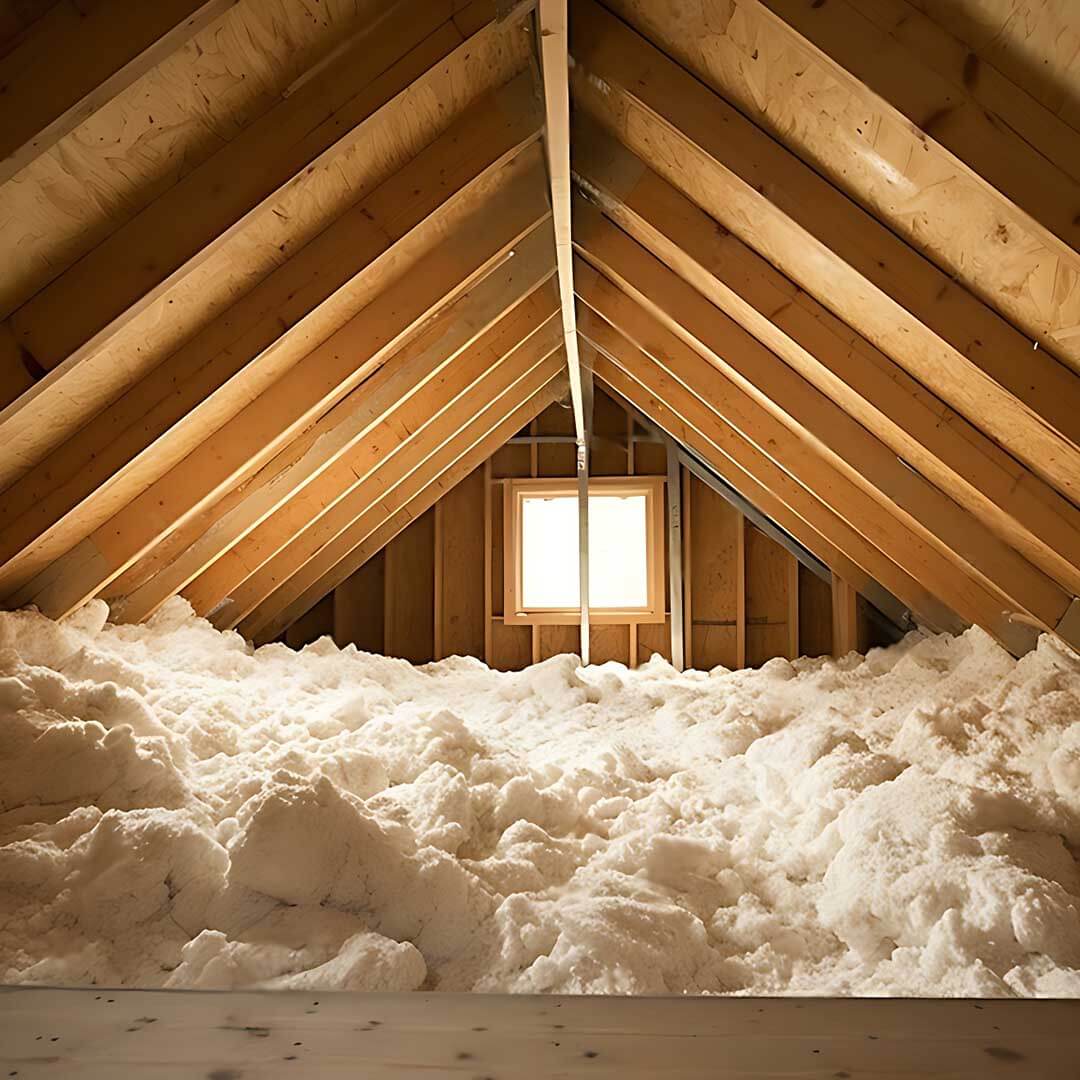
Ever notice that some of the warmth in our homes sneaks away through the roof? It’s like a secret escape mission happening right above us! Now, you might be thinking, “How do we stop this warm getaway?” Here’s the easy answer–loft insulation!
Picture this: a cozier home, lower energy bills, and a warmer embrace during chilly nights. Excited? You should be! That’s why we’re here to introduce you to the world of loft insulation.
Welcome to our “Loft Insulation Guide”. This article is your key to understanding the importance of loft insulation, exploring various types, navigating regulations, and reaping the benefits that come with a well-insulated loft.
Loft Insulation
Loft insulation is a method used to enhance a home’s energy efficiency by reducing heat loss and optimizing energy conservation. It entails installing a layer of insulating material in the area between the roof space and the ceiling, known as the loft or attic. This insulation acts as a barrier, helping to keep the indoor temperature stable and comfortable throughout the year.
How Loft insulation Works?
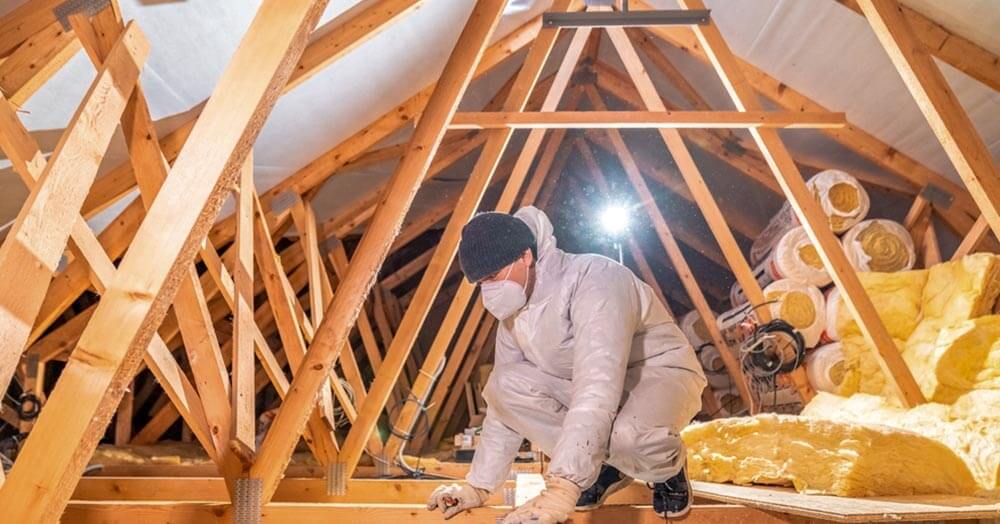
It works by creating a protective barrier that minimizes heat transfer between the inside of your home and the external environment, primarily through the roof. This loft insulation guide provides a detailed walkthrough of how this protective barrier operates.
Installation: Insulation material, such as fiberglass, mineral wool, or foam boards, is installed within the loft or attic space. It’s strategically placed between and over the joists, on the loft floor, or sometimes above the ceiling.
Heat Transfer Reduction: When you heat your home, warmth naturally rises. Without insulation, this heat easily escapes through the roof. Loft insulation acts as a barrier, slowing down the transfer of heat. This means in winter, the warmth generated inside stays in, and in summer, the outdoor heat is less likely to enter.
Energy Efficiency: By reducing the amount of heat lost through the roof, loft insulation makes your home more energy-efficient. This lowers the need for constant heating in colder months and cooling in warmer months, leading to significant energy savings.
Year-Round Comfort: Loft insulation helps maintain a consistent indoor temperature. In winter, it keeps your home warmer, and in summer, it prevents excessive heat buildup. This results in a more comfortable living space throughout the year.
Cost Savings: With a reduced reliance on heating and cooling systems, you’ll likely see a decrease in energy bills. While there’s an initial cost to install loft insulation, the long-term savings make it a cost-effective investment.
Environmental Impact: By lowering energy consumption, loft insulation contributes to environmental sustainability. It reduces greenhouse gas emissions associated with heating and cooling, aligning with broader efforts to combat climate change.
Types of Loft Insulation
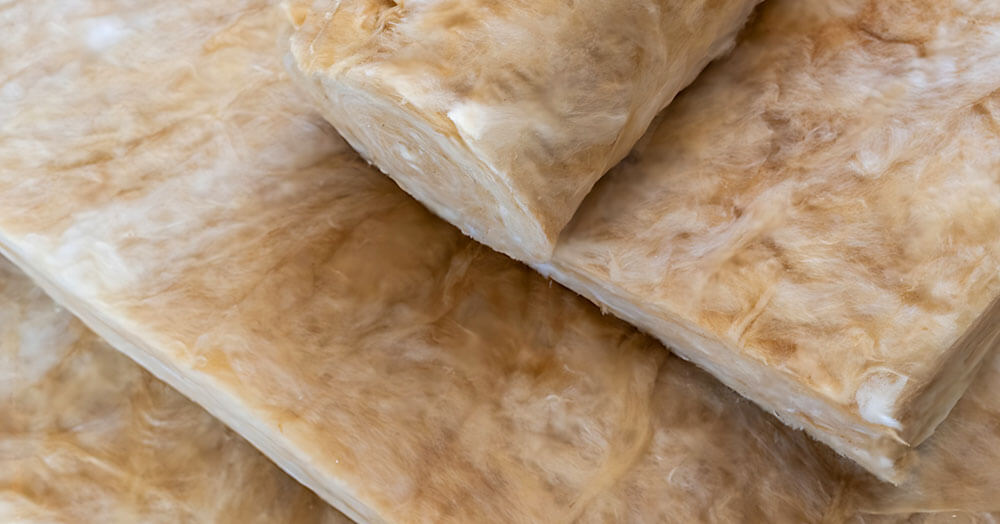
Among the myriad options available, each material brings unique characteristics to the table. The loft insulation guide aims to shed light on some prominent choices, emphasizing their features and benefits.
- Mineral Wool Insulation: Mineral wool insulation is a reliable choice known for its excellent thermal insulation and fire-resistant properties. Made from minerals like basalt or rock, it keeps your home warm while providing an added layer of safety.
- Blanket Insulation: Blanket insulation, mainly composed of fiberglass, is easy to install and offers effective coverage. It’s a straightforward solution that effortlessly adapts to your loft, creating a seamless barrier against heat loss.
- Loose-Fill Insulation: Loose-fill insulation, made of small particles like cellulose or fiberglass, is perfect for irregular spaces. Whether blown or poured, it efficiently fills every nook and cranny, preventing heat from escaping.
- Rigid Insulation Board: Rigid insulation boards are solid and durable, suitable for specific loft insulation needs. Crafted from materials like foam board or rigid fiberglass, they provide stability and structural support.
- Glass Wool Insulation: Glass wool insulation is a sustainable option made from recycled glass. It not only traps heat effectively but also contributes to environmental responsibility. It’s a versatile choice for keeping your home cozy while being eco-friendly.
- Cellulose Fibre Insulation: Crafted from recycled paper, cellulose fiber insulation is an eco-friendly option known for its thermal efficiency. Treated to resist fire and pests, it’s a sustainable choice that ensures warmth and safety for your loft.
Loft Insulation Sheets
Loft insulation sheets, also known as rigid insulation boards, are a type of insulation material that comes in pre-formed sheets or loft floor boards. They are typically made from materials like polystyrene or polyurethane foam and offer excellent thermal performance. Loft insulation sheets are easy to install and can be used in conjunction with other insulation materials to provide a complete insulation solution.
Loft Insulation Guidelines and Regulations in the UK
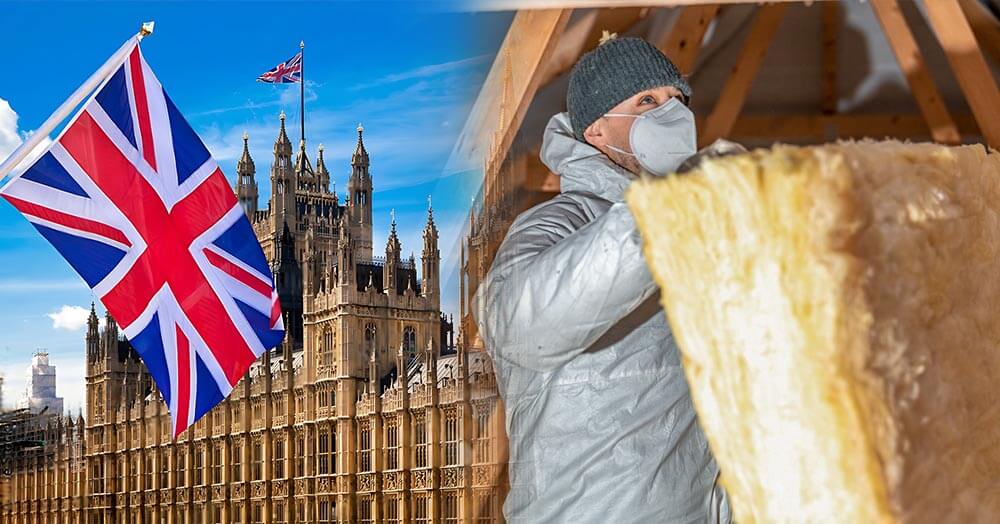
Loft Insulation Guidelines UK
The UK government has set out guidelines for loft insulation to ensure that homes are energy-efficient and comfortable. These guidelines recommend that:
Insulation thickness: The recommended thickness for loft insulation is at least 270mm. This thickness provides adequate resistance to heat transfer, keeping your home warmer in winter and cooler in summer.
Insulation type: Choose insulation that suits your loft space and requirements. Common options include mineral wool, glass wool, and cellulose.
Loft access: Ensure safe and easy access to your loft for insulation installation. This may involve clearing out any stored items and creating a clear path to the loft space.
Ventilation: Proper ventilation is crucial to prevent condensation and dampness in your insulated loft. This can be achieved by installing air vents or ensuring proper airflow throughout the loft space.
Loft Insulation Regulations UK
In the UK, Building Regulations mandate a minimum U-value of 0.16W/m²K for loft insulation. This means that the insulation should prevent heat loss at a rate of no more than 0.16 watts per square meter per degree Kelvin. Ensuring compliance with these regulations guarantees that your loft insulation meets the required standards for energy efficiency.
Loft Insulation Benefits
Loft insulation offers a multitude of benefits for homeowners, including
- Reduced Energy Bills: Loft insulation can significantly reduce your energy bills by up to 35% by preventing heat loss from your home. This translates into lower energy consumption and cost savings over time.
- Improved Comfort: Effective insulation maintains a more consistent temperature throughout your home, keeping it warmer in winter and cooler in summer. This enhances comfort levels and reduces reliance on heating and cooling systems.
- Reduced Noise Pollution: Insulation acts as a sound barrier, effectively reducing noise transmission from outside sources. This can be particularly beneficial in homes located in noisy areas.
- Increased Property Value: An energy-efficient home with proper insulation adds 20-25% value to your property, making it more attractive to potential buyers.
- Environmental Benefits: Loft insulation contributes to sustainability by reducing energy consumption and carbon footprint.
- Government Incentives: The UK government offers incentives, such as the ECO4 grants, to encourage loft insulation installation. These incentives make insulation up to 100% free.
- Condensation Reduction: Proper loft insulation helps prevent condensation and dampness in your loft, protecting your belongings and the structural integrity of your roof.
- Reduced Dust and Pollen: Insulation acts as a filter, trapping dust and pollen particles, improving indoor air quality and reducing allergy symptoms.
- Fire Safety: Certain insulation materials, such as mineral wool, offer fire resistance, providing an additional layer of protection against the spread of flames.
- Improved Soundproofing: Insulation can enhance soundproofing between rooms and floors, reducing noise disturbances and creating a more peaceful home environment.
- Loft Insulation Options
Loft insulation offers a range of options to suit different loft spaces, budgets, and environmental considerations. Here’s a comprehensive overview of the most common types of loft insulation:
Cold Loft Insulation:
For lofts that are not used as living spaces, cold loft insulation is the simplest and most cost-effective option. Insulation is typically laid between the joists on the loft floor, providing a barrier to heat loss from the rooms below.
Common Cold Loft Insulation Materials:
- Mineral wool: Mineral wool is a popular choice due to its fire resistance, good thermal performance, and ease of installation.
- Glass wool: Glass wool is another common option, offering similar properties to mineral wool but with a slightly lighter weight and easier handling.
Warm Loft Insulation:
When converting a loft into a living space, warm loft insulation is essential to maintain comfortable temperatures throughout the year. This involves installing insulation between and over the rafters of the roof, creating a continuous layer of insulation.
Common Warm Loft Insulation Materials:
- Mineral wool or glass wool: These materials can be used in conjunction with rigid insulation boards to provide a complete insulation solution for warm lofts.
- Rigid insulation boards (PIR, polystyrene, polyurethane foam): These boards offer excellent thermal performance and are easy to install, making them suitable for warm loft insulation.
Loose-Fill Insulation:
Loose-fill insulation, such as cellulose, is blown into place using specialized equipment, effectively filling in gaps and cracks in the loft space. This method is particularly useful for uneven or awkward loft spaces.
Natural Insulation Materials:
For those seeking eco-friendly options, natural insulation materials like sheep’s wool, hemp insulation, and flax insulation are gaining popularity. These materials offer good thermal performance and sustainable credentials.
Hybrid Insulation Solutions:
Combining different insulation materials can provide a tailored solution for specific loft requirements. For instance, a combination of loose-fill insulation and rigid insulation boards can address both thermal performance and soundproofing needs.
Top Layer Insulation Vs Base Layer Insulation
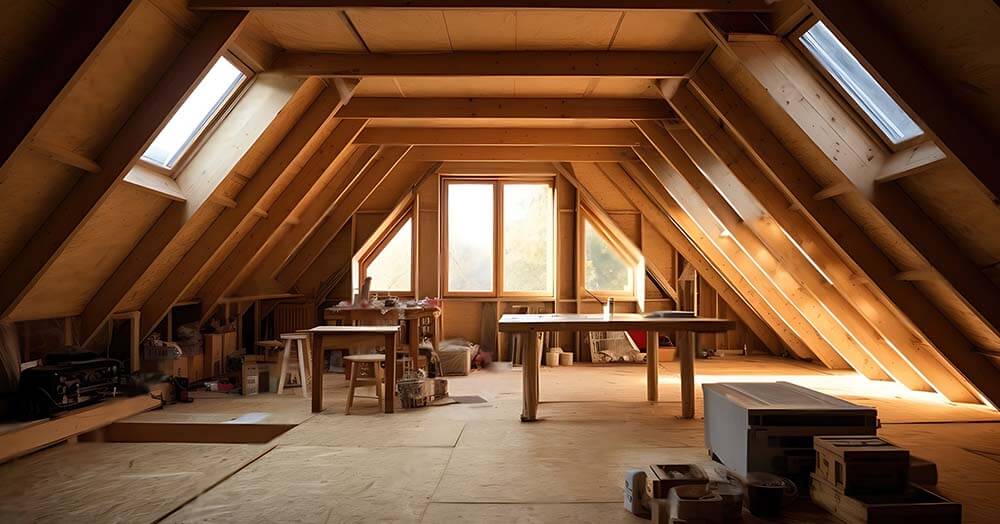
Top Layer Insulation:
Top layer insulation involves placing the insulating material on the uppermost part of the loft, often directly under the roof. This method is particularly effective in preventing heat loss through the roof, as it creates a barrier that traps warmth inside the living space. Choosing a top-layer insulation approach can be advantageous for optimizing thermal performance.
Base Layer Insulation:
Base layer insulation is installed between the ceiling joists, closer to the living space. This method targets the area where heat is generated and retained within the home. While base layer insulation may not directly address potential heat loss through the roof, it contributes to maintaining a comfortable indoor temperature by minimizing heat transfer from the living space.
Considerations for Choosing:
- Ease of Installation: Consideration of ease of installation is paramount. Top layer insulation may require access to the loft space or loft hatch and potentially involve more complex installation, especially if the loft is used for storage.
- Thermal Efficiency: Assess the thermal efficiency needs of your home. If preventing insulation, being closer to the living space, might be more straightforward to install.
- Base Layer: heat loss through the roof is a primary concern, top-layer insulation may be the preferred choice. However, if you want to focus on retaining heat within the living space, base layer insulation could be more suitable.
- Usage of Loft Space: Take into account how you use your loft space. If it’s a frequently accessed area for storage or other purposes, the practicality of installation and ease of movement within the loft should guide your decision.
- Climate Considerations: Consider your local climate. In areas where temperatures fluctuate significantly, a combination of top and base layer insulation might be the most effective strategy.
Loft Insulation for Free
The UK government offers several financial incentives to encourage homeowners to improve the energy efficiency of their homes, including loft insulation. These incentives can help to offset the cost of installation and make loft insulation more affordable for a wider range of households.
Eco4 Grant
The Eco4 grant is a government-funded scheme that provides financial assistance to eligible homeowners for energy-saving home improvements, including loft insulation. The grant is available to homeowners in England, Scotland, and Wales who meet certain income and property eligibility criteria.
Great British Insulation Scheme (GBIS)
The GBIS is a new scheme launched in April 2023 and set to run until March 2026. It aims to offer financial assistance to homeowners in England and Wales who cannot access funding through the Eco4 grant.
DIY Vs Professional Installation
Choosing between DIY and professional loft insulation involves considering factors such as your skills, time, and cost. While DIY can save on labor, professional installation, often available at zero cost through government schemes, ensures expertise, speed, and quality. Assess your proficiency, available time, and financial considerations to make the most suitable decision for your loft insulation needs.
Conclusion
In conclusion, while loft insulation is undeniably essential for a warmer, more energy-efficient home, it often comes with a cost. However, the long-term benefits in terms of reduced energy bills and increased property value far outweigh the initial investment.
But what if the cost is a concern? Here’s some good news – S6 Energy is here to help you get loft insulation for free under the ECO4 and GBIS grant with the assistance of professionals. Our satisfied clients attest to the effectiveness of our service.
To learn more about this opportunity – click here today.
To seize this opportunity and check your eligibility


